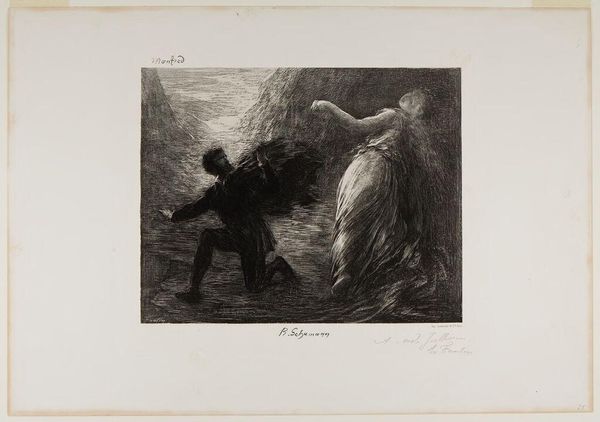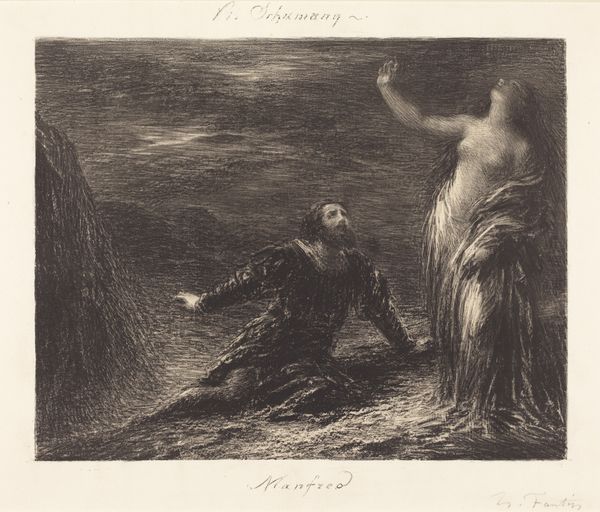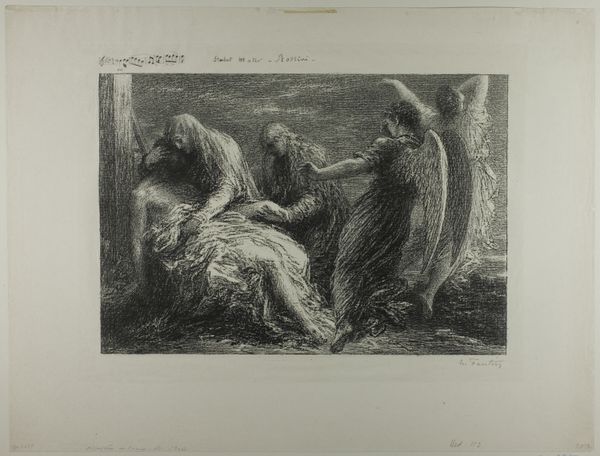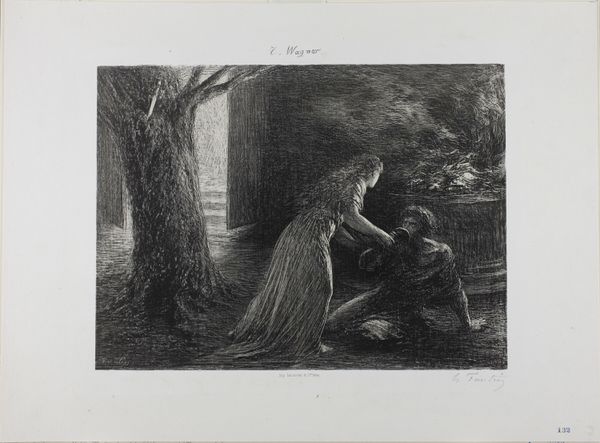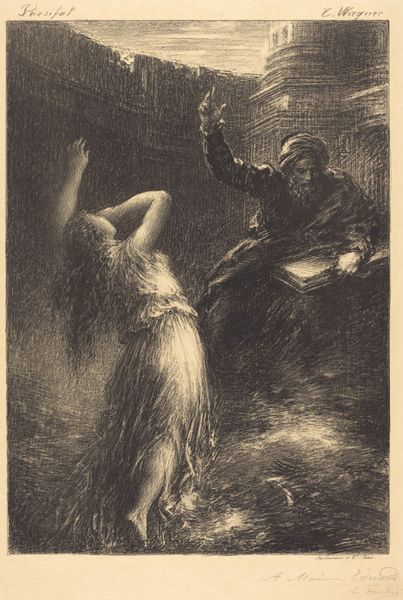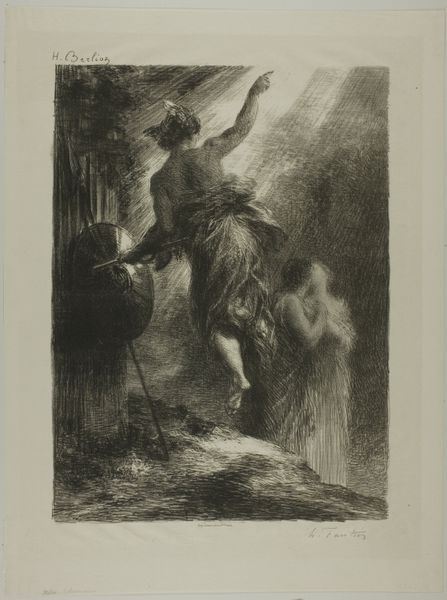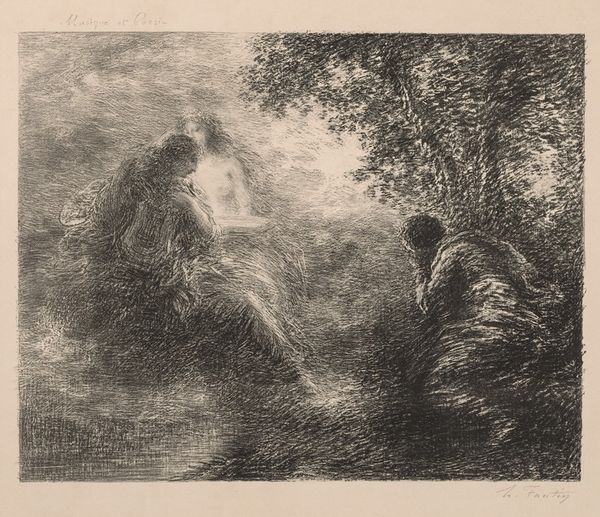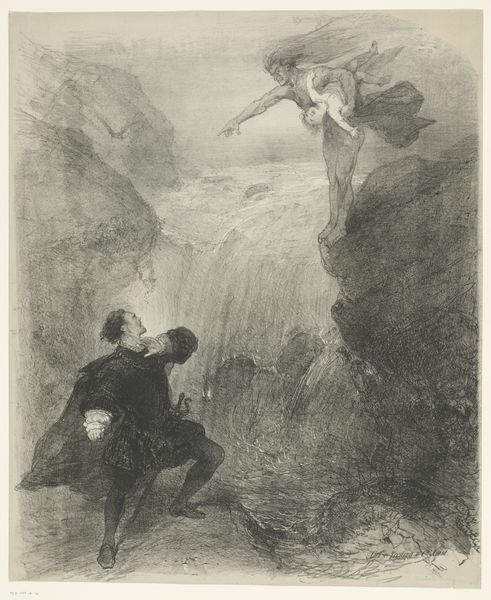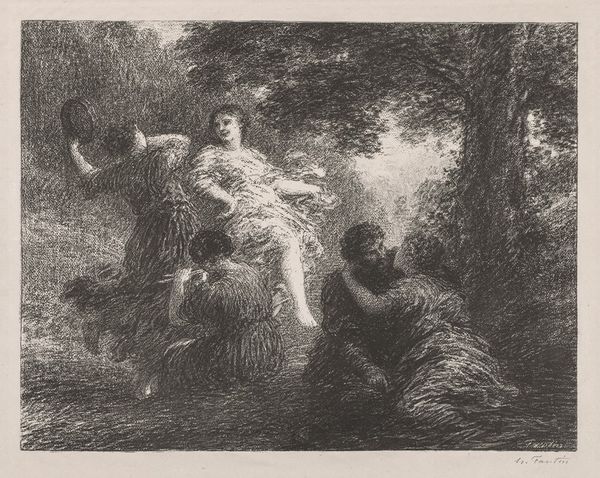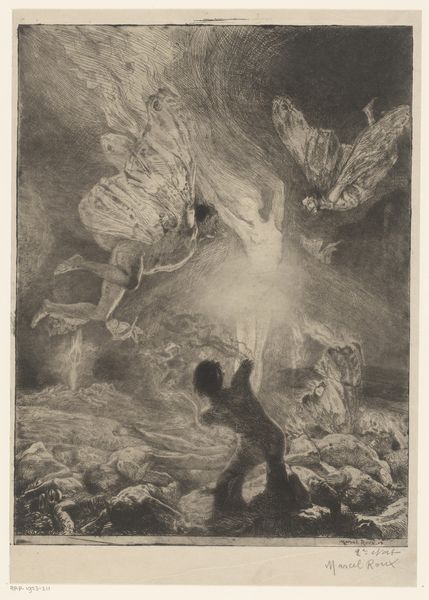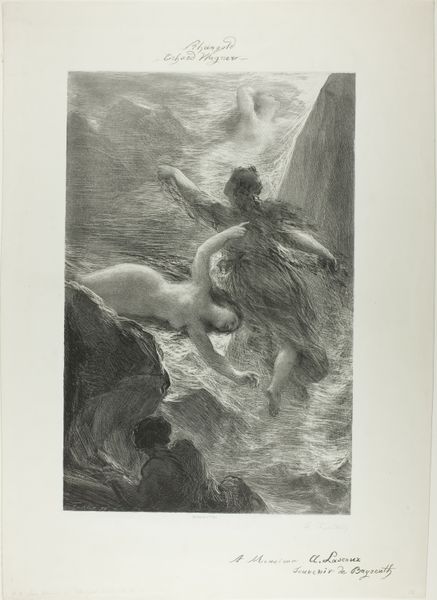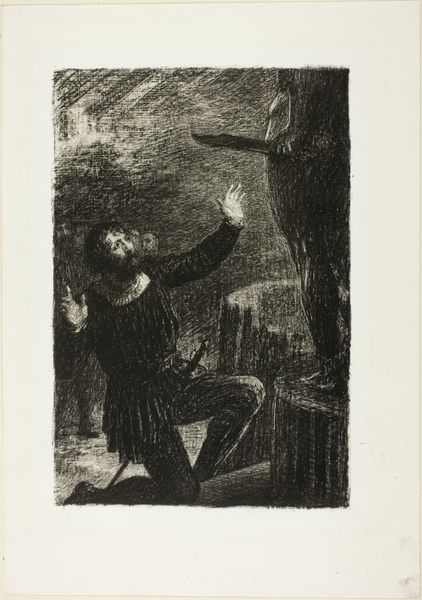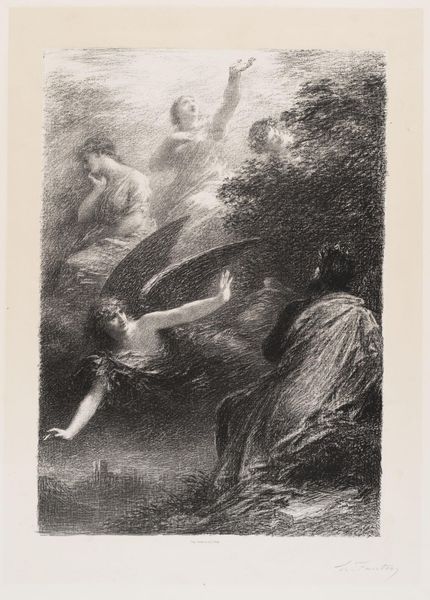
Copyright: Public Domain: Artvee
Henri Fantin-Latour made this print, Manfred and Astarté, using a technique called lithography. It's a way of printing that relies on the contrast between greasy and water-receptive areas on a flat stone or metal plate. The artist would draw the image on the stone with a greasy crayon, then treat the surface so that ink only sticks to the drawn areas. This is a departure from traditional etching or engraving, where lines are physically cut into a metal plate. Lithography allowed Fantin-Latour to achieve subtle tonal variations and a soft, almost dreamlike quality, perfectly suited to the romantic subject matter. Consider the labor involved: grinding the stone, preparing the surface, drawing the image, and finally, the printing process itself. Although lithography allowed for multiples, each print still required careful attention. It speaks to the wider social context of the time. The rise of industrialization made art more accessible, yet it also highlighted the value of skilled handwork in a world increasingly dominated by machines. Fantin-Latour shows us that even in a print, the hand of the artist, and the materiality of the process, remains vital to the work's meaning and beauty.
Comments
No comments
Be the first to comment and join the conversation on the ultimate creative platform.
